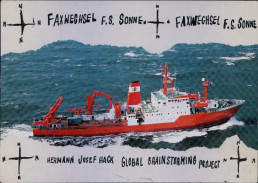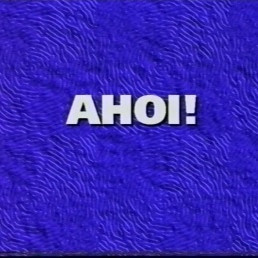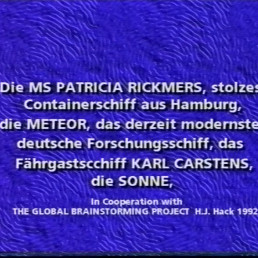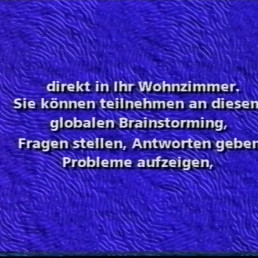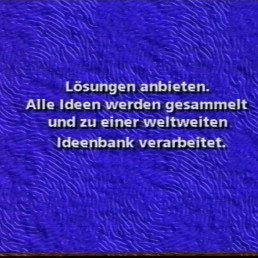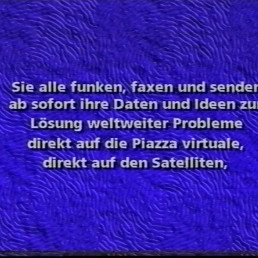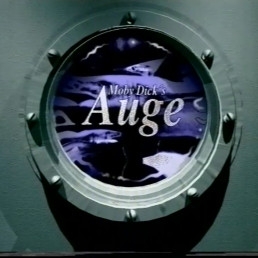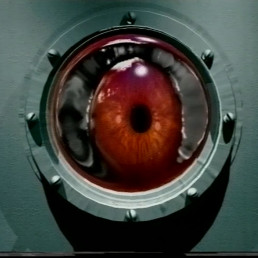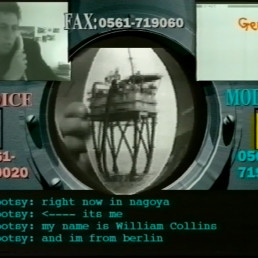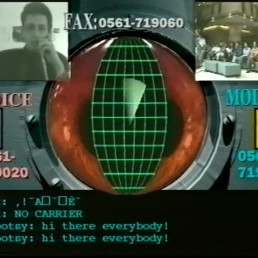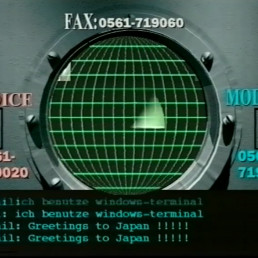Moby Dick’s Eye
In the programme segment “Moby Dick’s Eye”, designed by the artist Hermann Josef Hack, contact was established between the audience and research institutions in inaccessible places via videophone. Viewers were able to talk to scientists at the Institute for Marine Research, on the North Sea research platform off Helgoland and the research ships Poseidon and Gauss, among others. The callers’ questions concern the research objectives and the everyday work of the scientists, who strive to make their work transparent. Again and again, the topic is environmental pollution and even climate change. In the direct confrontation between laypeople and scientists, however, topics also come up that go beyond the scope of scientific technical questions, for example when a caller asks about the number of female researchers on board. Hermann Josef Hack, who had already brought scientists and amateurs together in his “Global Brainstorming Project”, continued to work on telecommunications and satellite projects afterwards and was one of the first artists in Germany to work with the internet. Many of his projects dealing with social grievances and societal problems reached a large audience through actions in public spaces and the mass media.
Video clip of Moby Dick’s Eye
Van Gogh TV on Moby Dick’s Eye
Behind the scenes of Moby Dick’s Eye: TV broadcast on the left, inside the Studio on the right
Hermann Josef Hack, Global Brainstorming Project (Postkarte)
Screen shots of Moby Dick’s Eye
